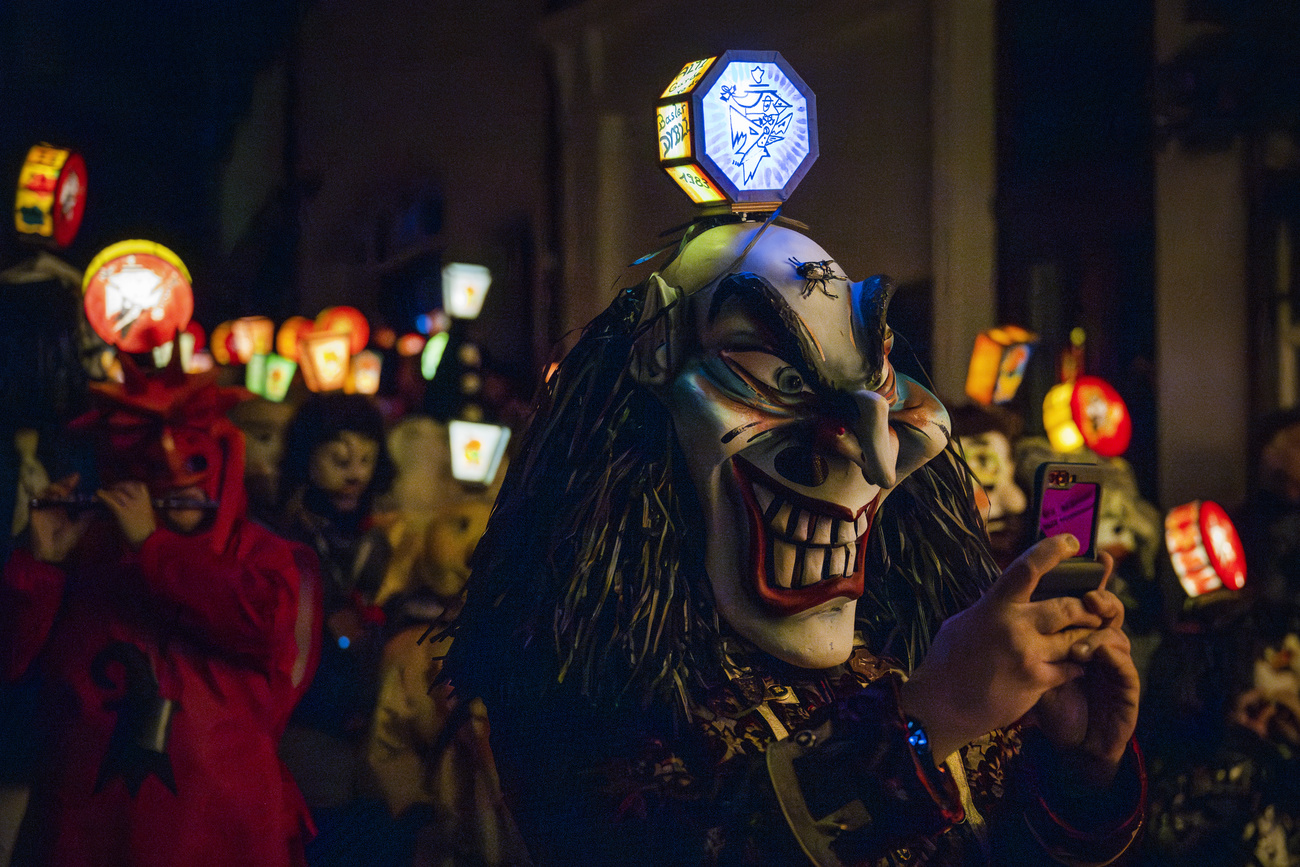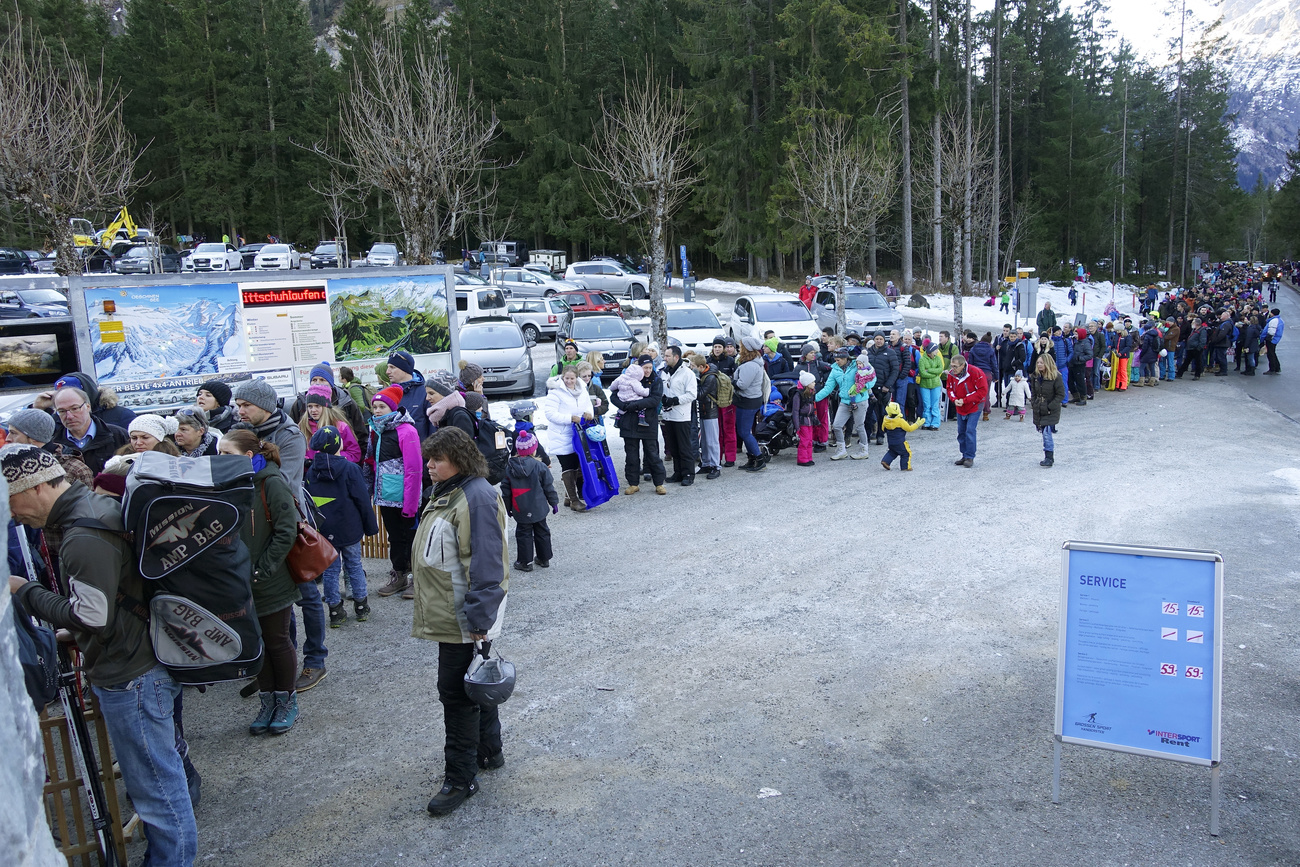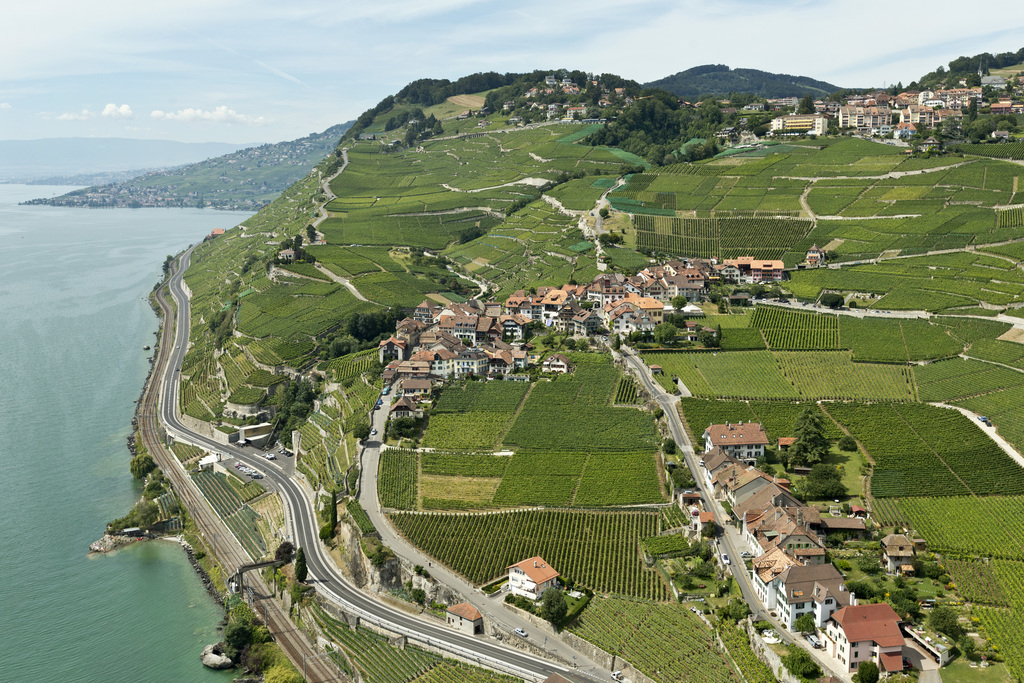Swiss commit to boosting UNESCO heritage sites
Despite being home to 11 World Heritage sites, the Swiss don’t grasp the full extent of this cultural richness and the special conservation efforts needed, warns a Swiss UNESCO official.
Switzerland may be small but it boasts eleven sites on the UNESCO World Heritage listExternal link, including the Lavaux vineyard terraces near Lake Geneva, Bern Old Town and St Gallen Abbey.
“But they are not just a series of eleven museum pieces,” declared Jean-Bernard Münch, president of the Swiss Commission for UNESCOExternal link, the Paris-based United Nations Education, Scientific and Cultural Organisation.
Münch was one of 200 officials from federal departments, cantons, associations and tourist sectors involved in raising awareness and protecting these unique sites who gathered on Monday in Bern to sign a charter External linkoverseeing UNESCO World Heritage in Switzerland.
Awareness of the sites among the Swiss public is “progressing” says Münch, but he admits that “most people don’t really know what they are all about”.
Improving awareness of the richness of the UNESCO sites in Switzerland and ensuring “each and every Swiss is familiar and proud of them”, is just one aspect the commission president hopes to build upon.
“On the same page”
The new charter document, which has been in the pipeline for a couple of years, is nothing revolutionary but aims to ensure that all the relevant people working in this field are “on the same page”, said Münch.
“It’s often extremely complex to manage the sites and it’s useful to put things down on paper so we all understand the same things. In the past the management was relatively dispersed and autonomous, and the sites suffered from being isolated,” he said, adding that there is no specific Swiss legislation governing heritage sites.
Since the world heritage label’s inception in 1972, UNESCO’s global list has grown to over 1,000 sites in 161 countries. In all 191 countries have ratified the Convention concerning the Protection of World Cultural and Natural Heritage. Switzerland did so in 1975.
The small alpine nation first came onto the list in 1983 with the Old City of Bern, St. Gallen Abbey and the Benedictine Convent of St. John in Müstair in canton Graubünden.
Evolving landscape
Last year, the spectacular Lavaux vine terraces, which gained heritage status as a “cultural landscape” in 2007, were at the heart of a battle between environmentalists and winegrowers over how much development should be allowed in the UNESCO heritage area. In May 2014, a majority of local voters finally rejected an initiative urging tougher planning regulations.
Münch said this vote was symbolic of the misunderstanding surrounding heritage sites and their protection status.
“The international convention doesn’t aim to fix things in marble. UNESCO realises that these sites must be protected, subject to research and conservation measures, but must also evolve with the people who live there,” he said.
“Lavaux is not a landscape but a countryside built by the local winemakers. If there were no more winemakers there would be no more Lavaux. It all goes together.”
The Swiss list has slowly extended. In 2011, 56 prehistoric pile dwellings close to Lake Neuchâtel were inscribed. Another international project, concerning Swiss architect Le Corbusier, is awaiting an official decision.
Münch said no new projects were up for consideration, but the Federal Office of Culture is “more open” to new applications after “taking its foot off the accelerator”.
Yodelling
Apart from the eleven sites protected by the World Heritage Convention, Switzerland is considering applying for special protection status for certain so-called “Intangible Cultural Heritage”. External link
This could include yodelling, watchmaking, the country’s tradition of graphic and typographic design — epitomized by the Helvetica font – or the Fête des Vignerons winemakers festival in Vevey, celebrated every 20 years.
Also in the running are the Alpine livestock season, marked by ceremonies in which herders take their animals to and from the mountains, as well as the Easter processions in the town of Mendrisio, and Basel Carnival.
Switzerland is expected to make a final decision on the candidate to put forward later this month. It ratified the UNESCO Convention for the Safeguarding of Intangible Cultural HeritageExternal link in 2008.

In compliance with the JTI standards
More: SWI swissinfo.ch certified by the Journalism Trust Initiative











You can find an overview of ongoing debates with our journalists here . Please join us!
If you want to start a conversation about a topic raised in this article or want to report factual errors, email us at english@swissinfo.ch.